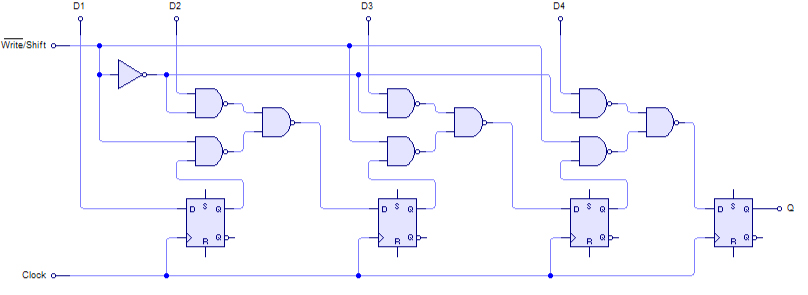Chase Brower
Steampunker
I've already looked into the thread about the binary counter with left shift, but this will not work (or at least must be modified in a way i can't seem to figure out) for what i am trying to create.
I'm working on a certain project, and in the project i want to have a saved number, and be able to shift the bits to the left or right each time a clock pulses, and furthermore be able to switch between shifting the number to the left or right.
I spent a ton of time trying to figure it out, but even when i do manage to make a design to shift to the left, i can't get it to shift to the right, and having 2 separate shifters would bring up the problem of having the saved value in sync. (This value is constantly being read on a display, and the right/left shifters would have to be interchangeably used, and the value on the display must not change except by shifting.)
For those wanting to know the project, it is a display that allows a "Dot" to move up, left, right, or down, and my goal is to achieve this through shifting 1 left to go left, 1 right to go right, or the same length as the display is left to go up, and vice versa to go down.
I'm working on a certain project, and in the project i want to have a saved number, and be able to shift the bits to the left or right each time a clock pulses, and furthermore be able to switch between shifting the number to the left or right.
I spent a ton of time trying to figure it out, but even when i do manage to make a design to shift to the left, i can't get it to shift to the right, and having 2 separate shifters would bring up the problem of having the saved value in sync. (This value is constantly being read on a display, and the right/left shifters would have to be interchangeably used, and the value on the display must not change except by shifting.)
For those wanting to know the project, it is a display that allows a "Dot" to move up, left, right, or down, and my goal is to achieve this through shifting 1 left to go left, 1 right to go right, or the same length as the display is left to go up, and vice versa to go down.



